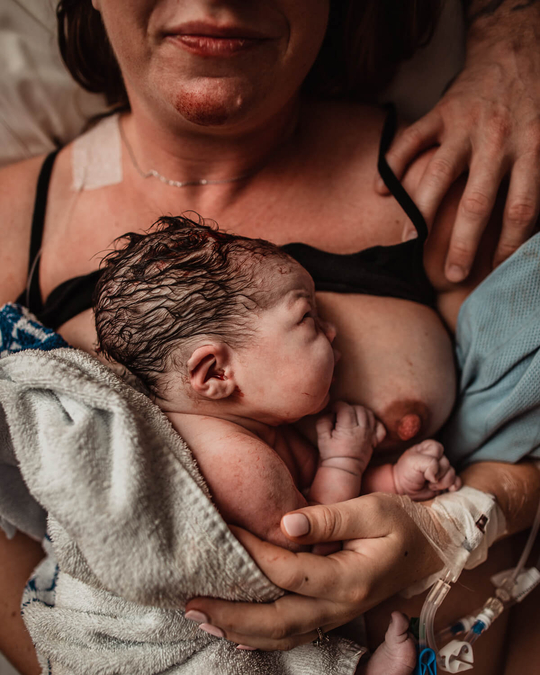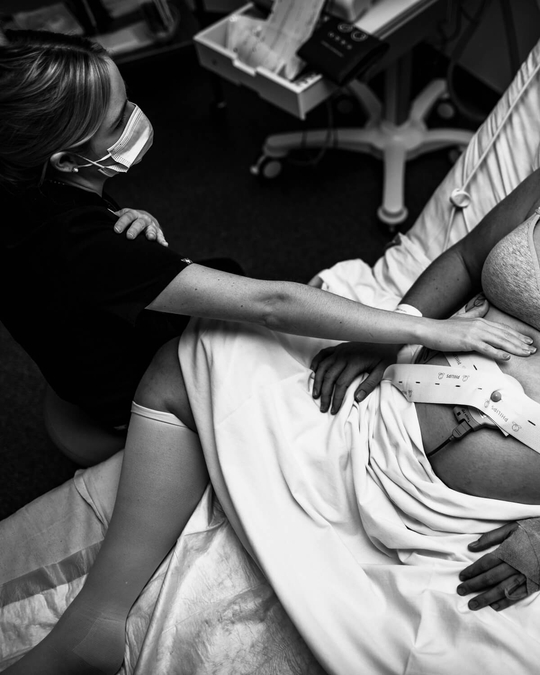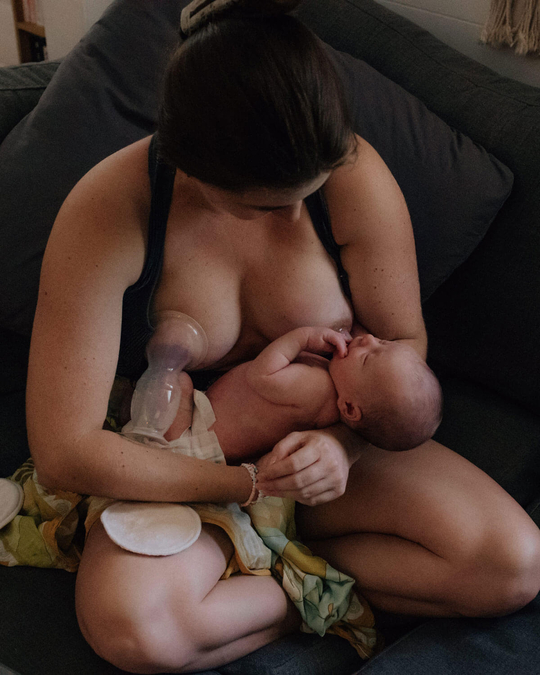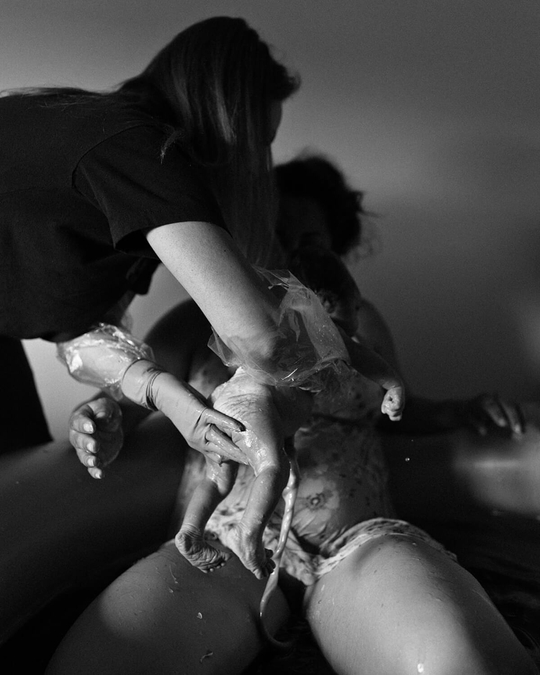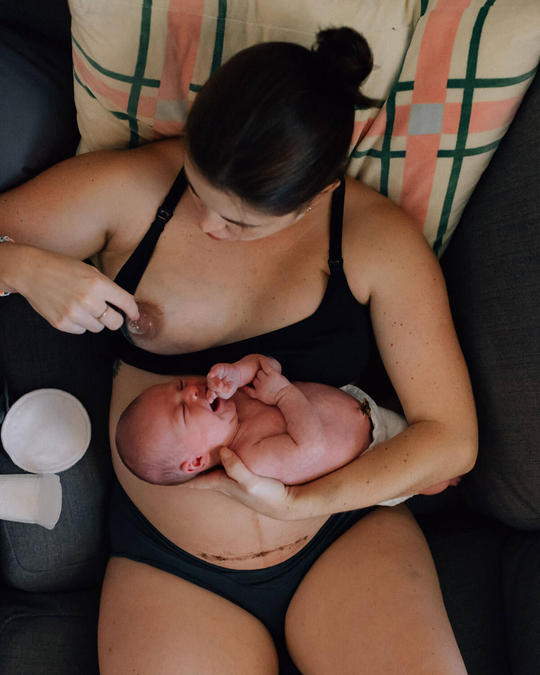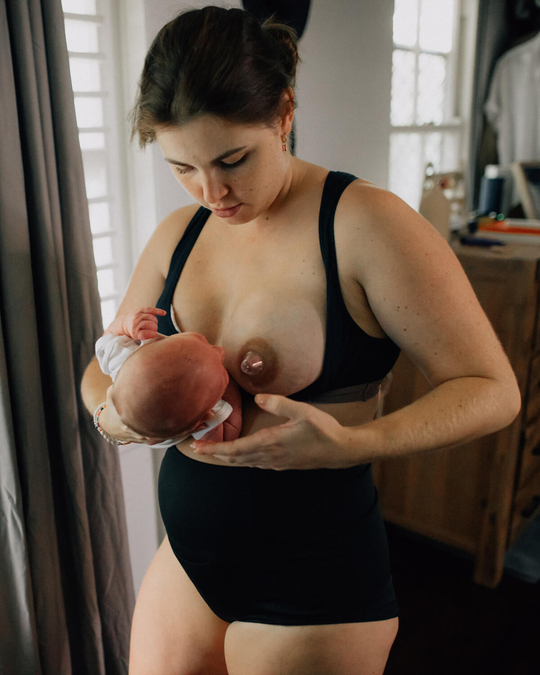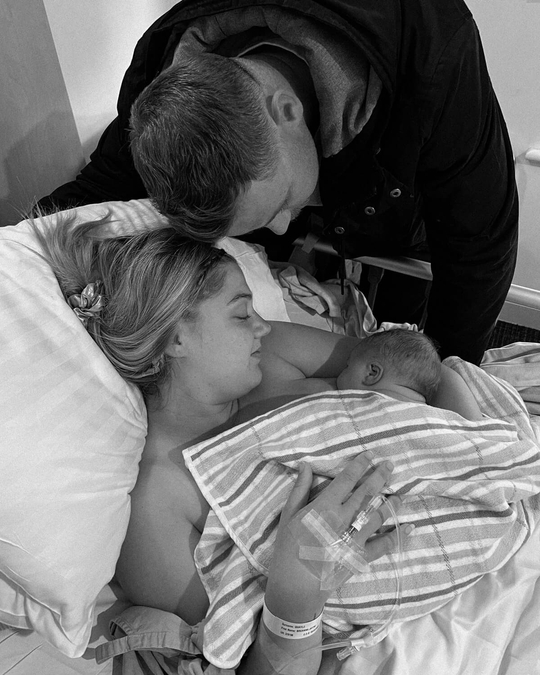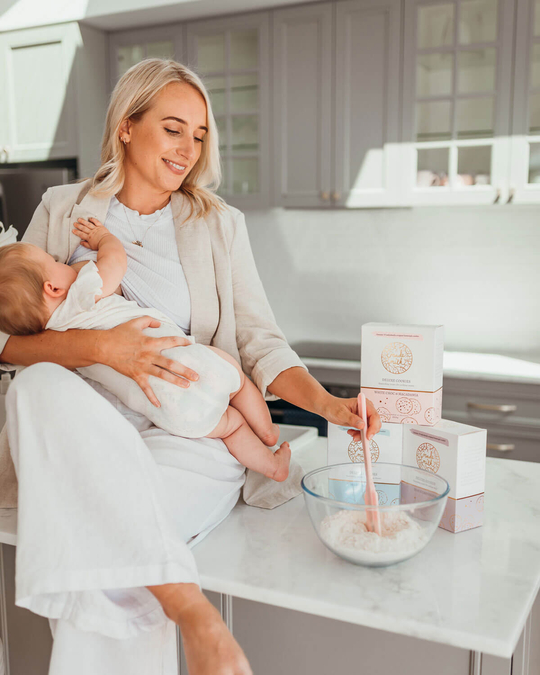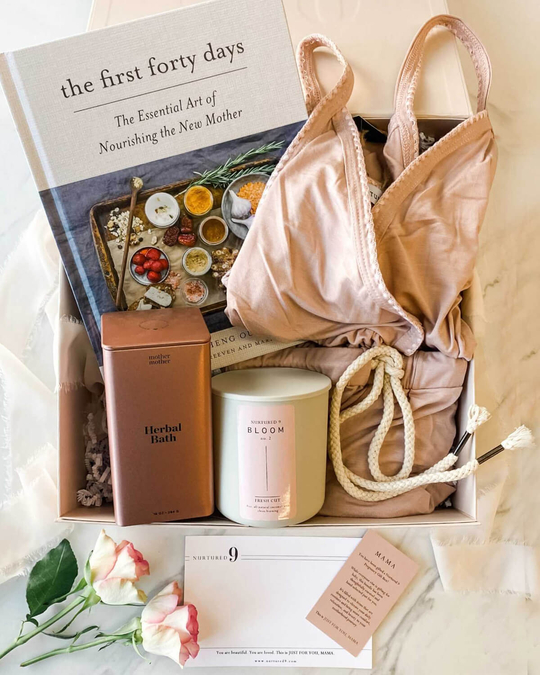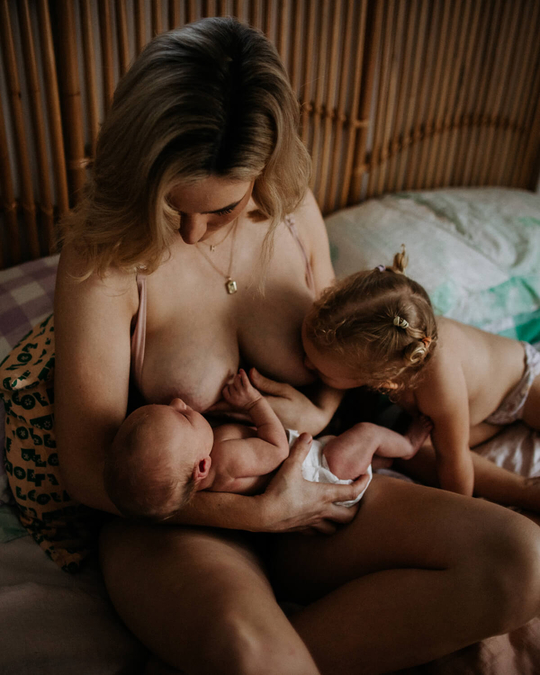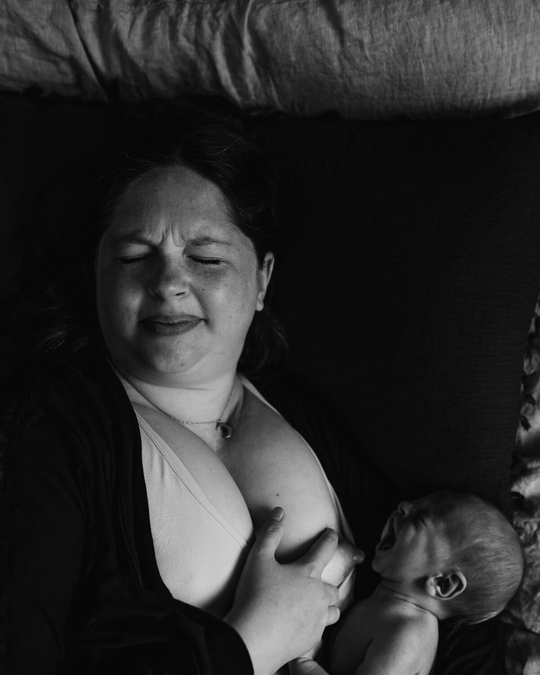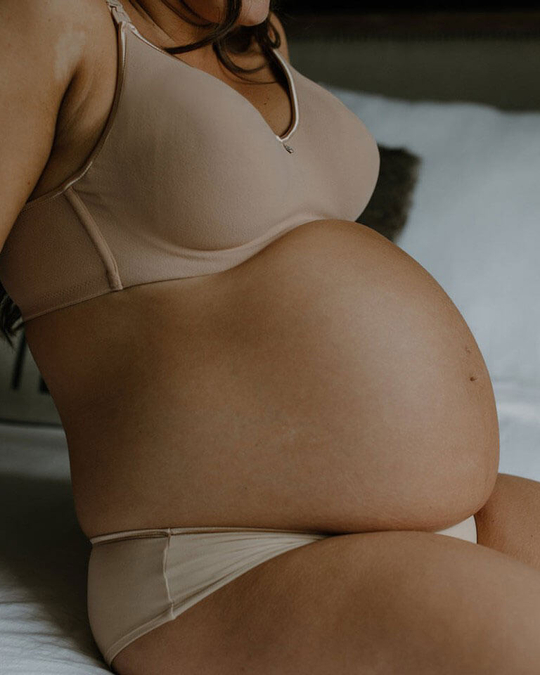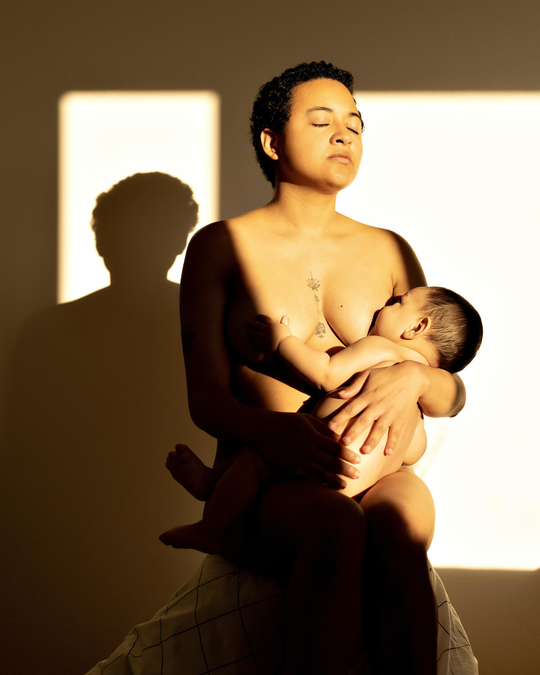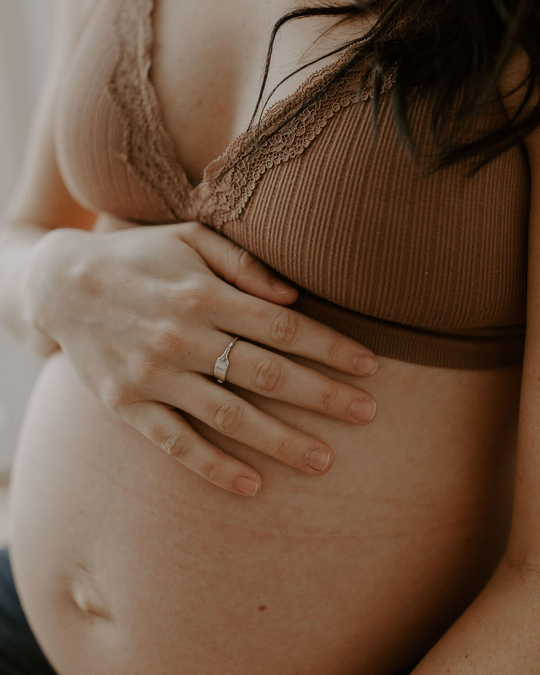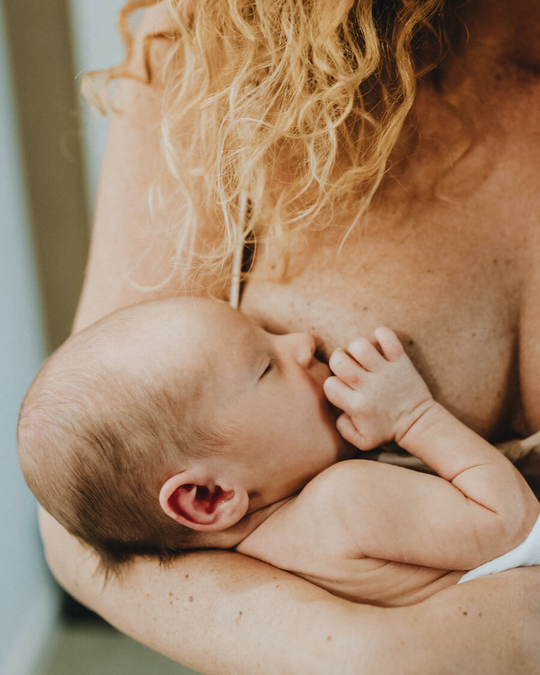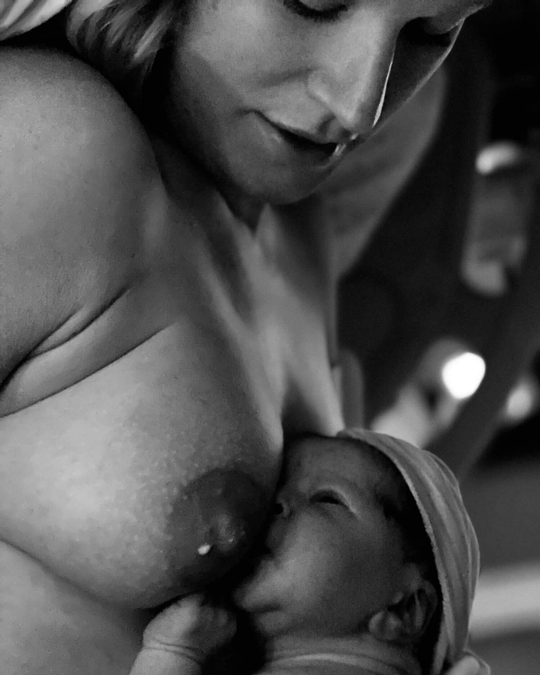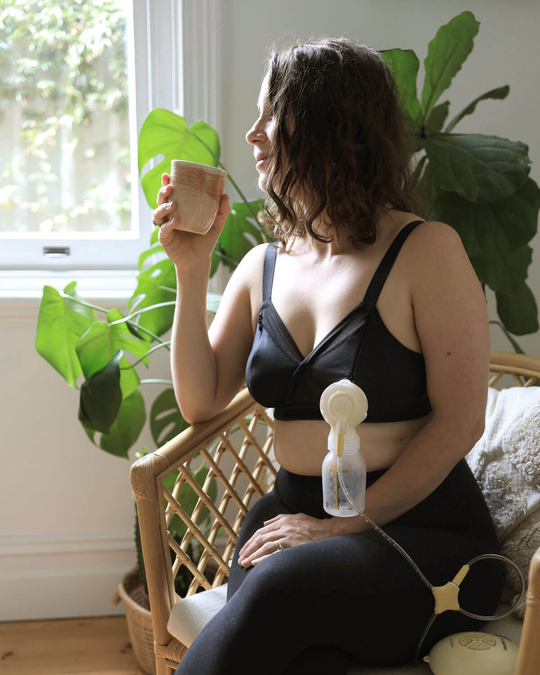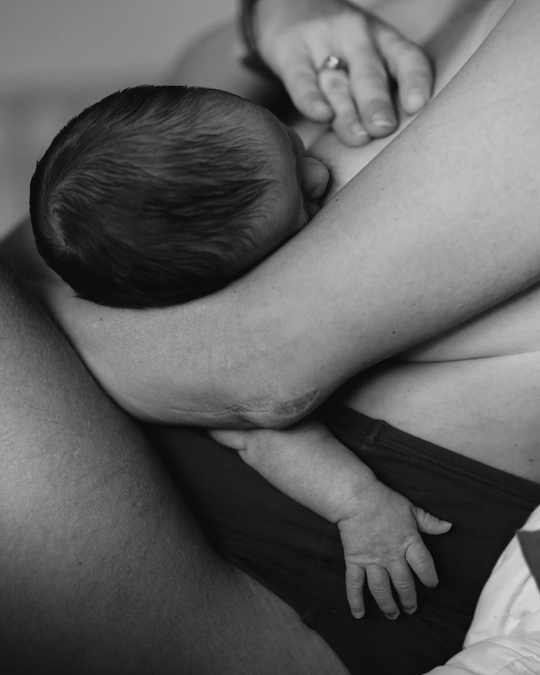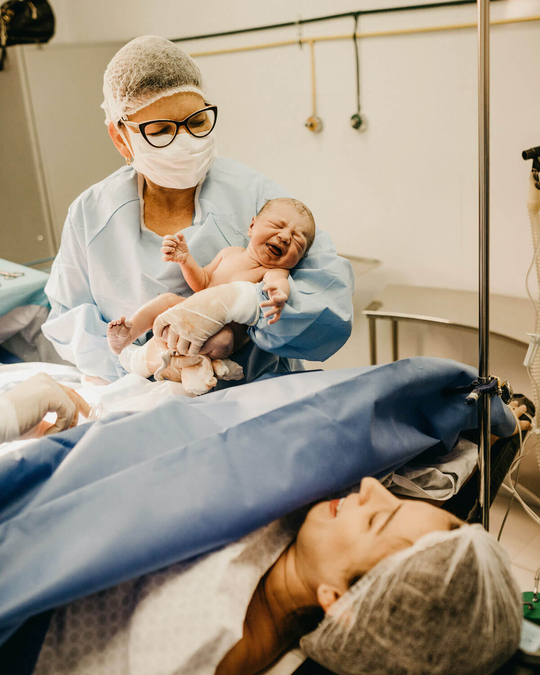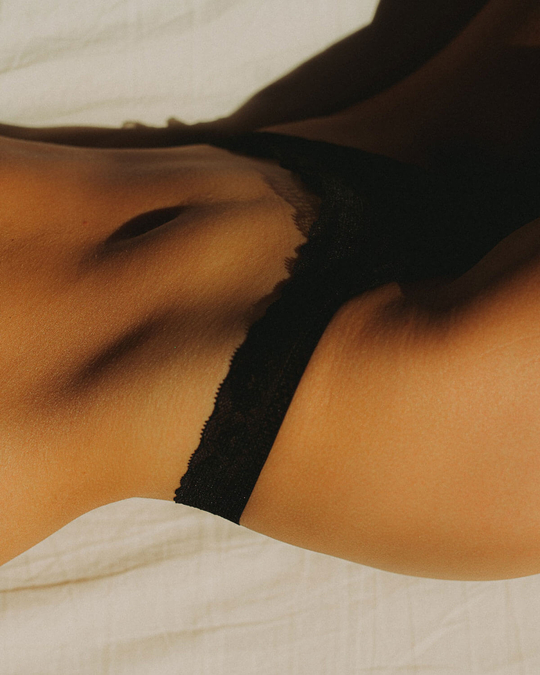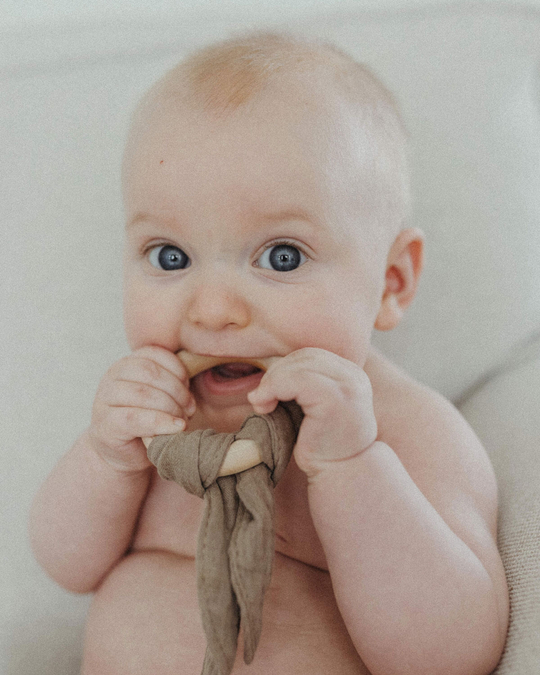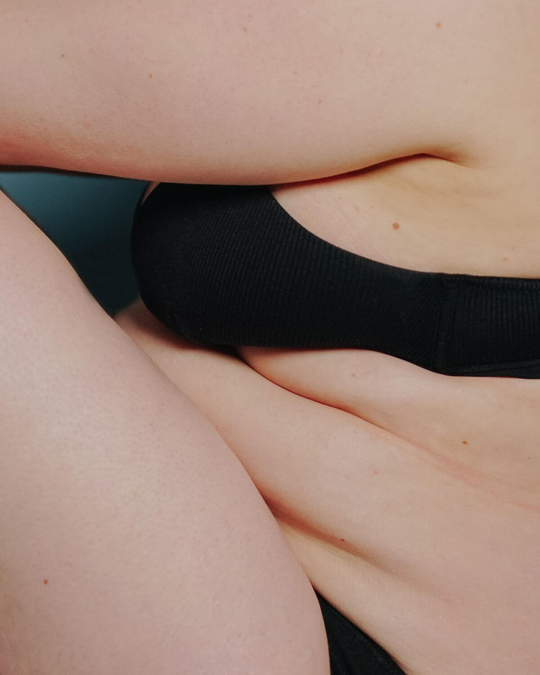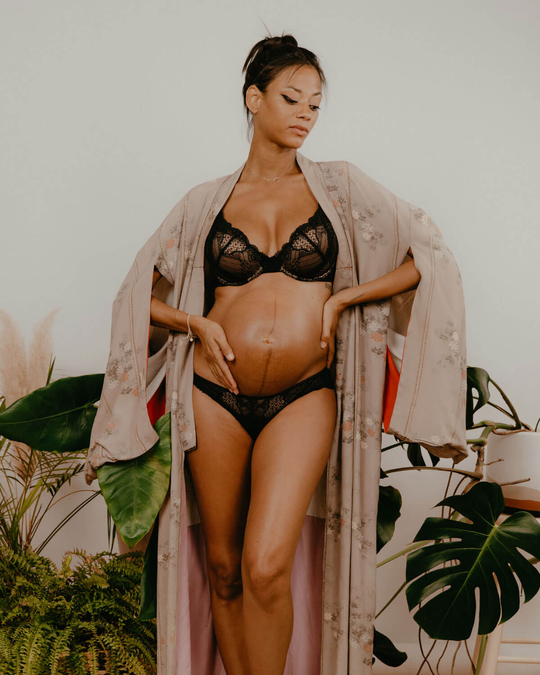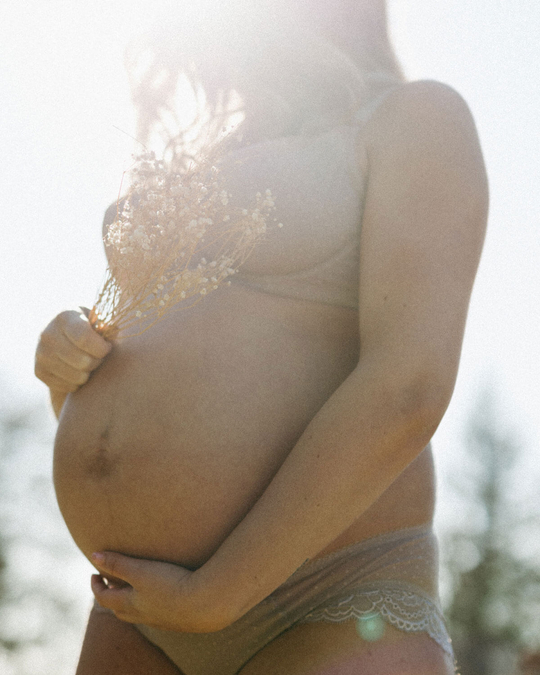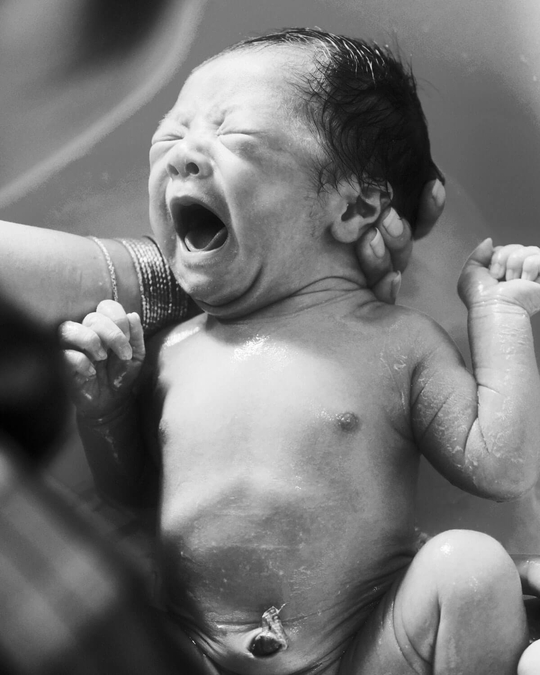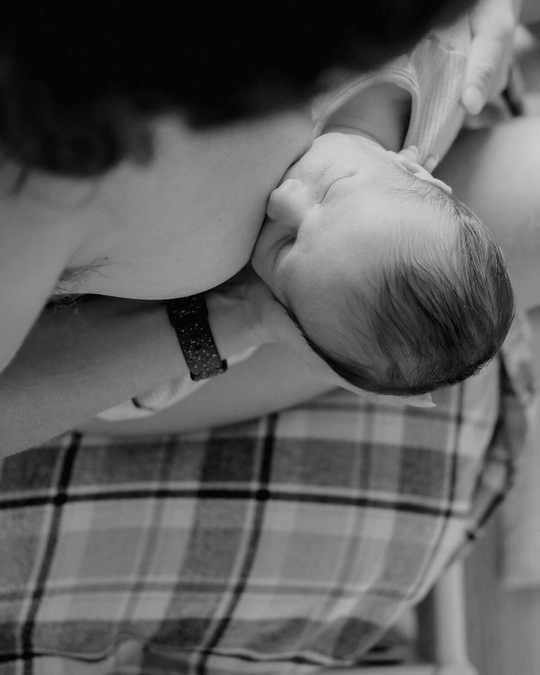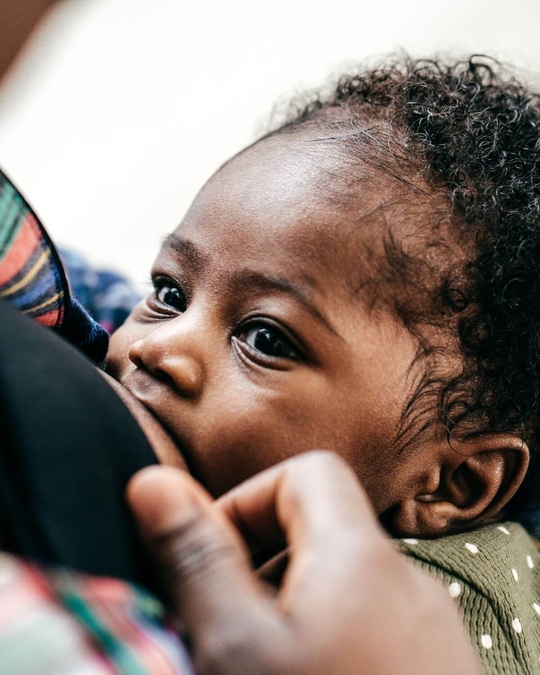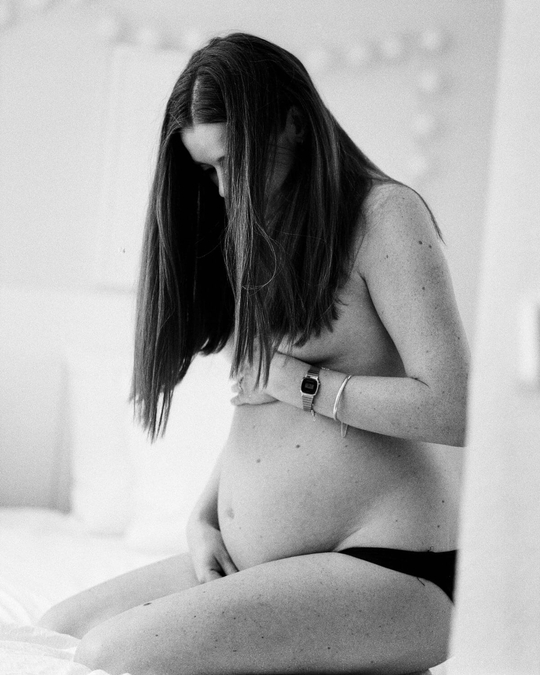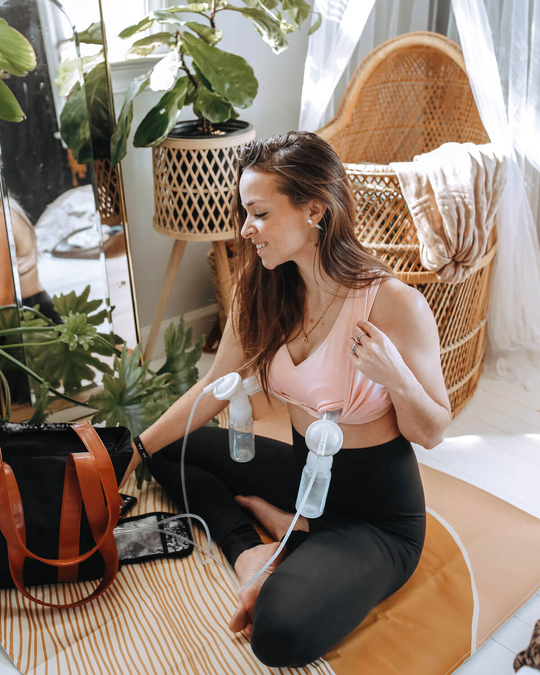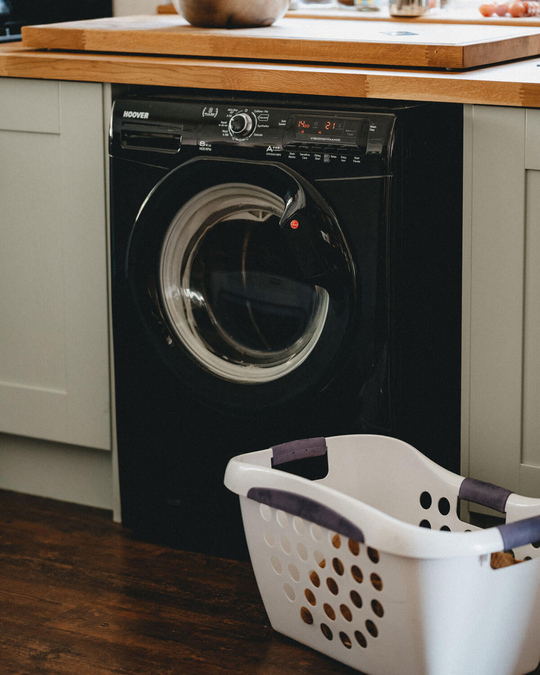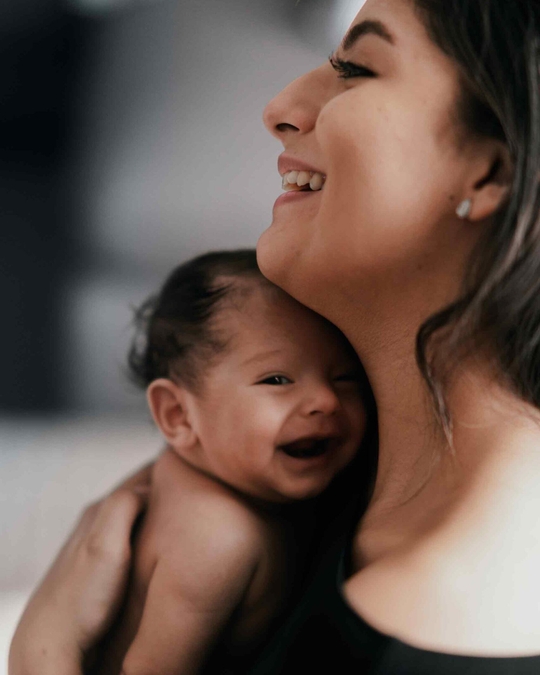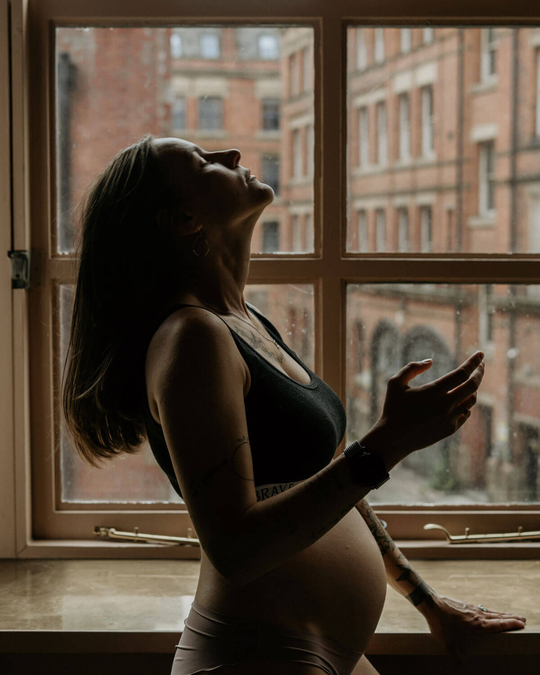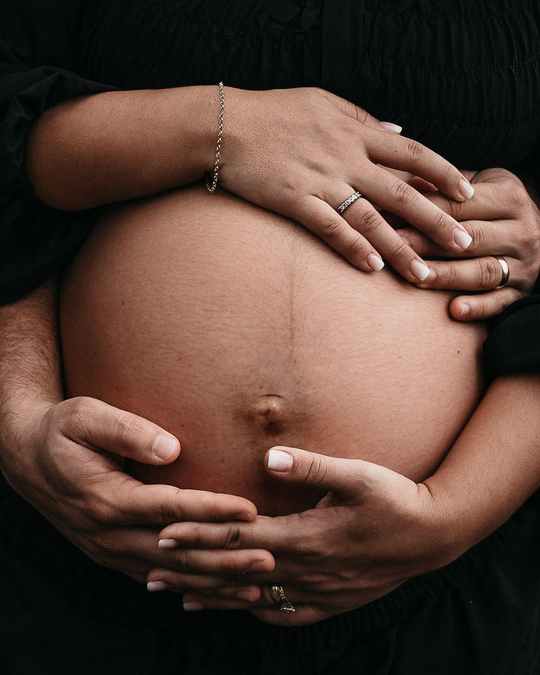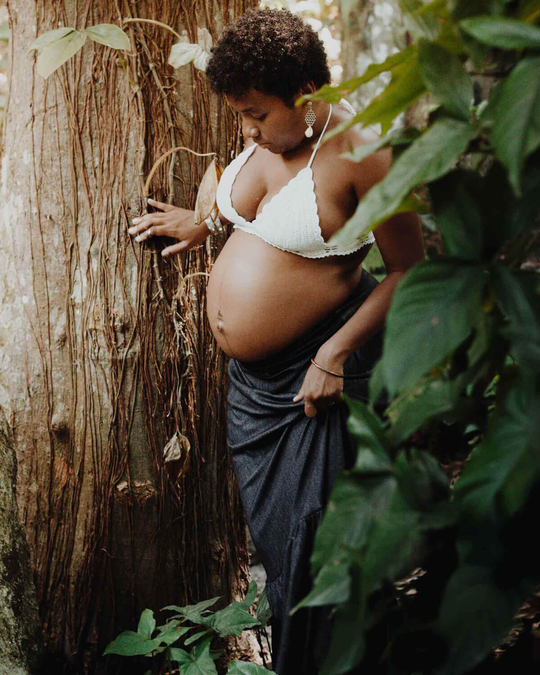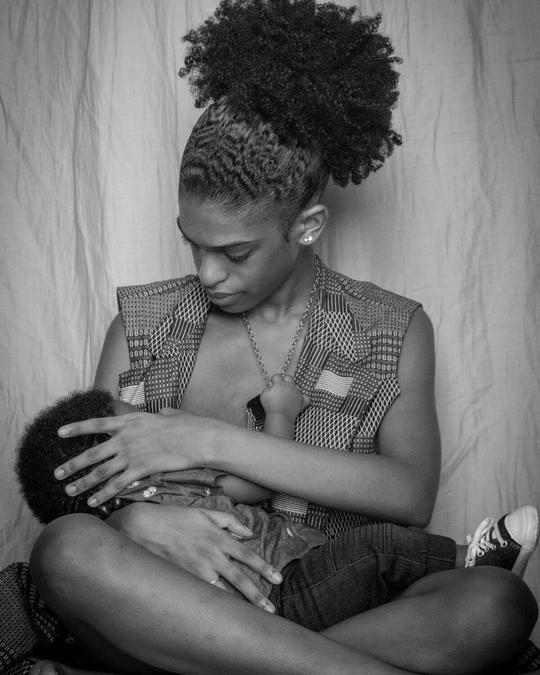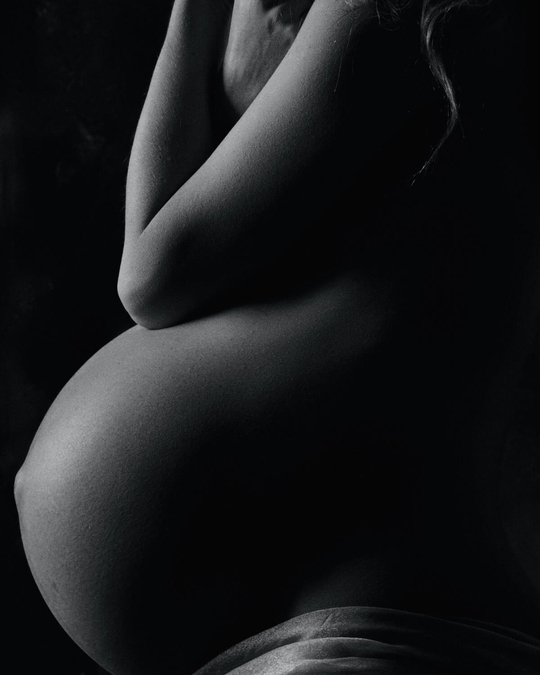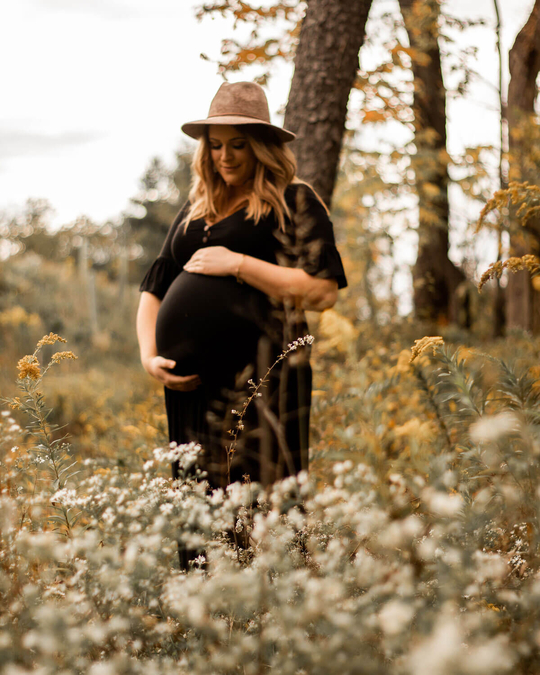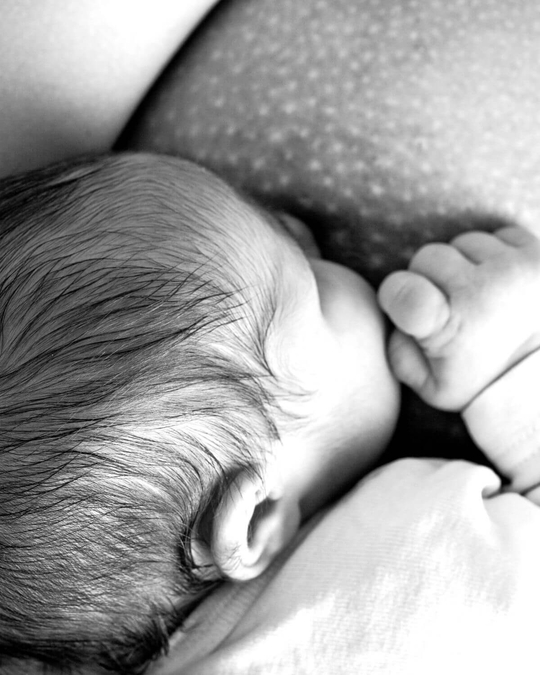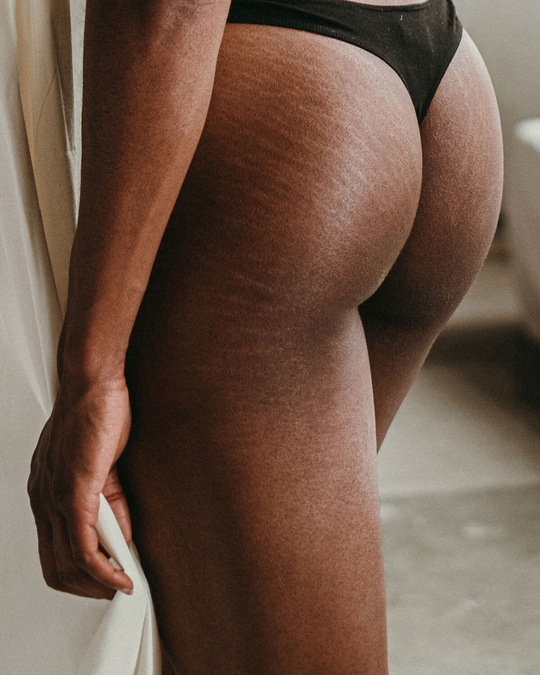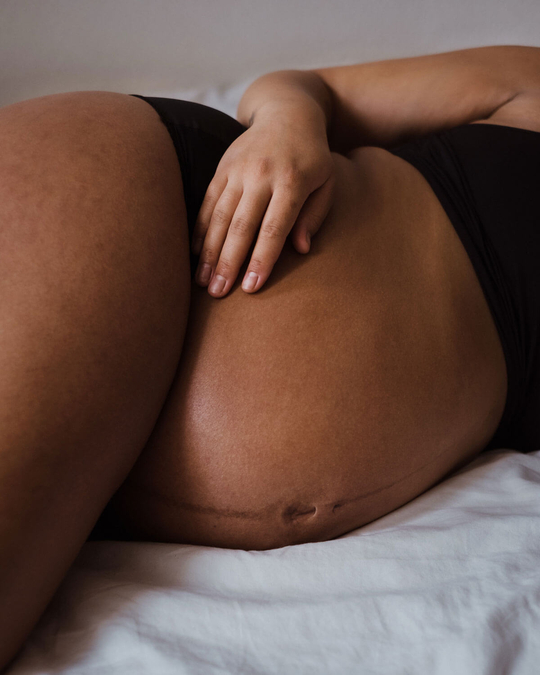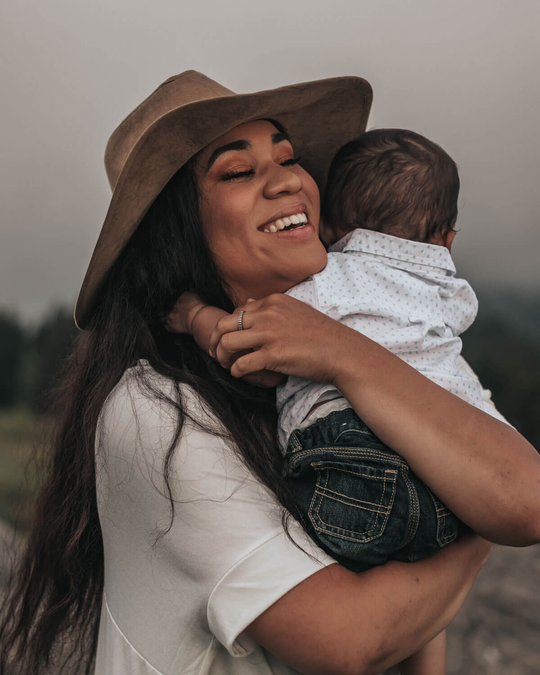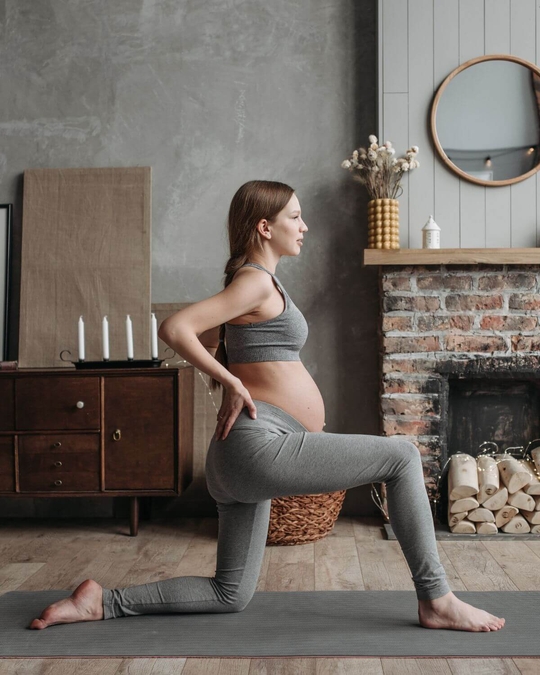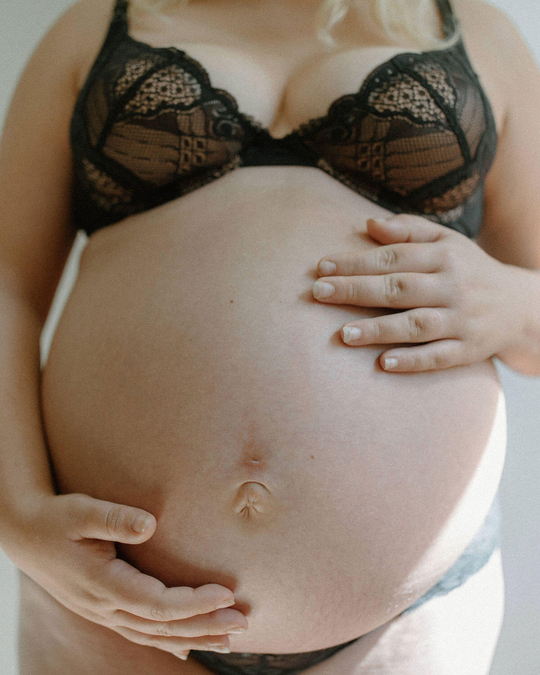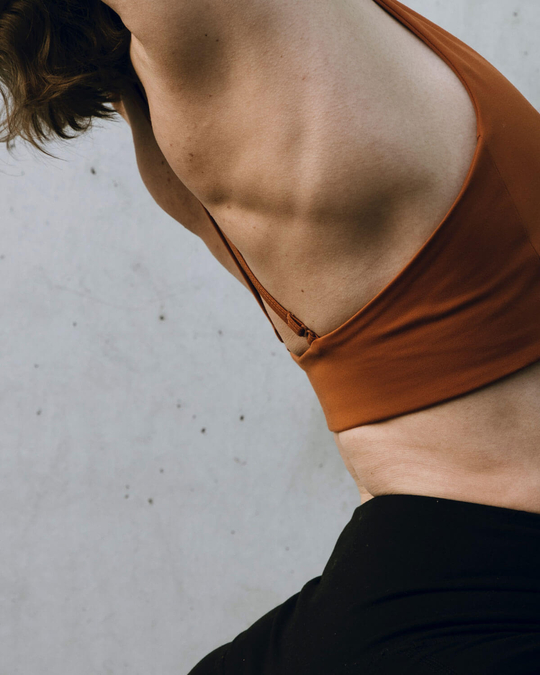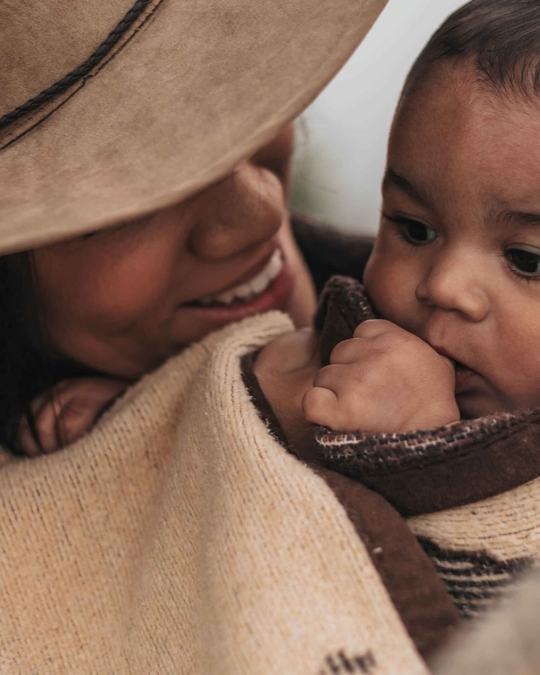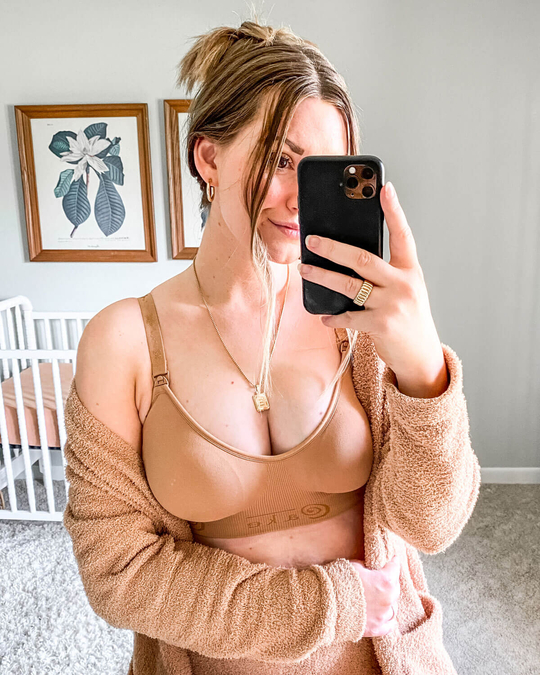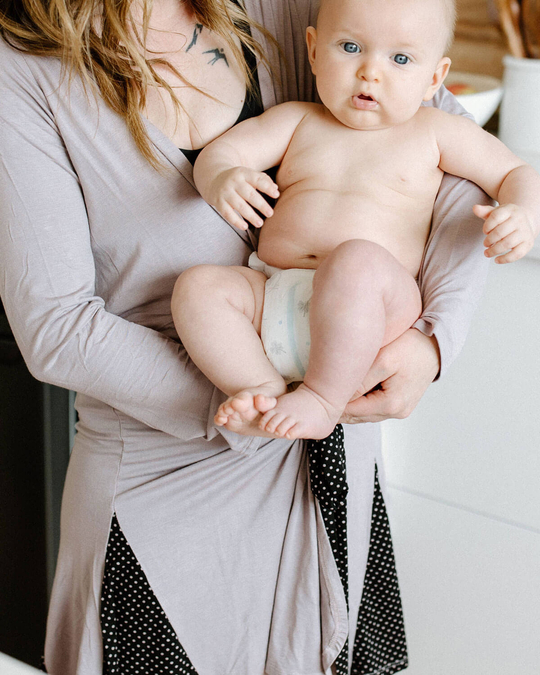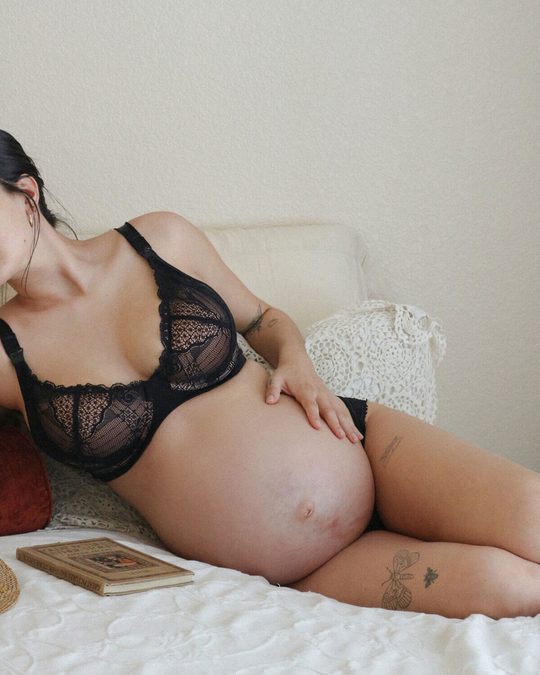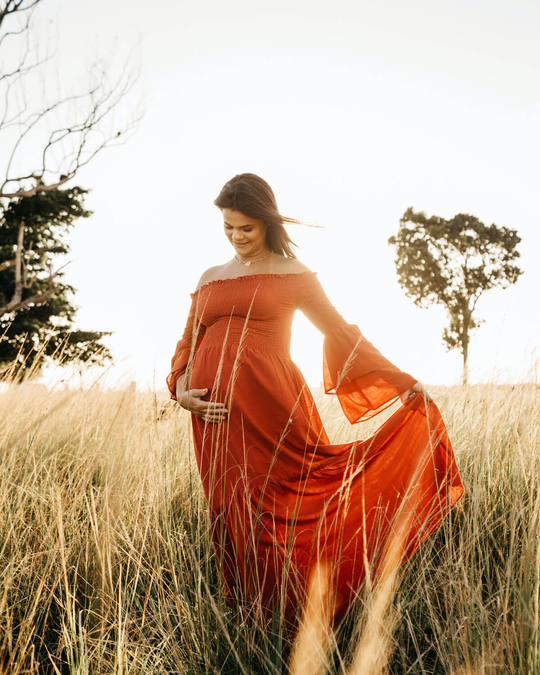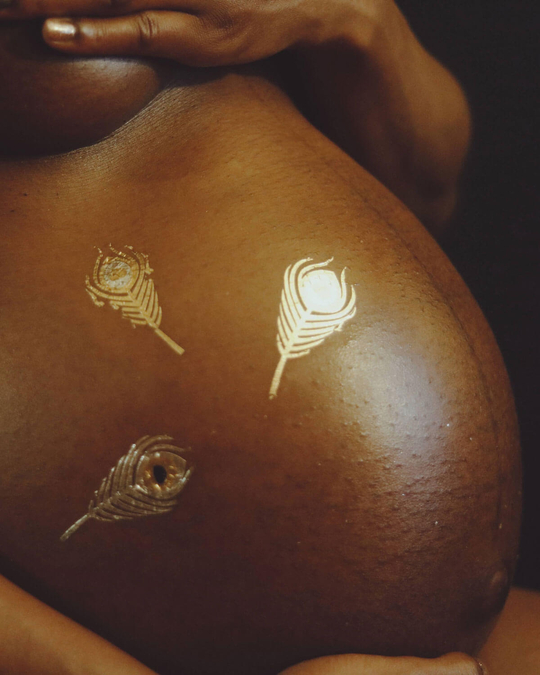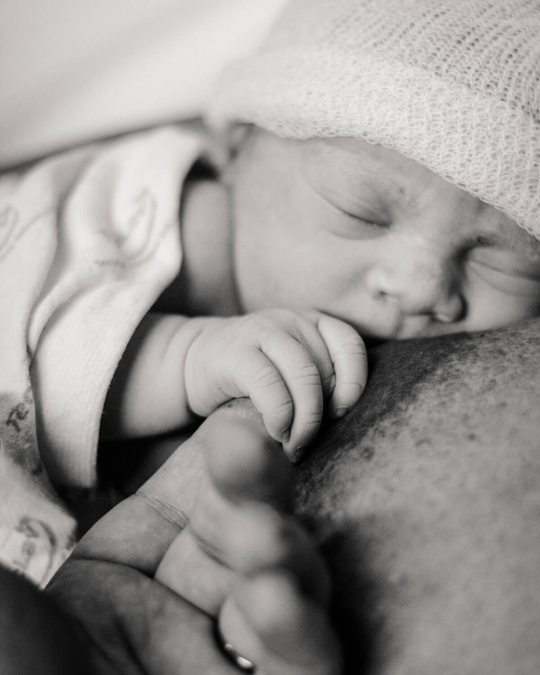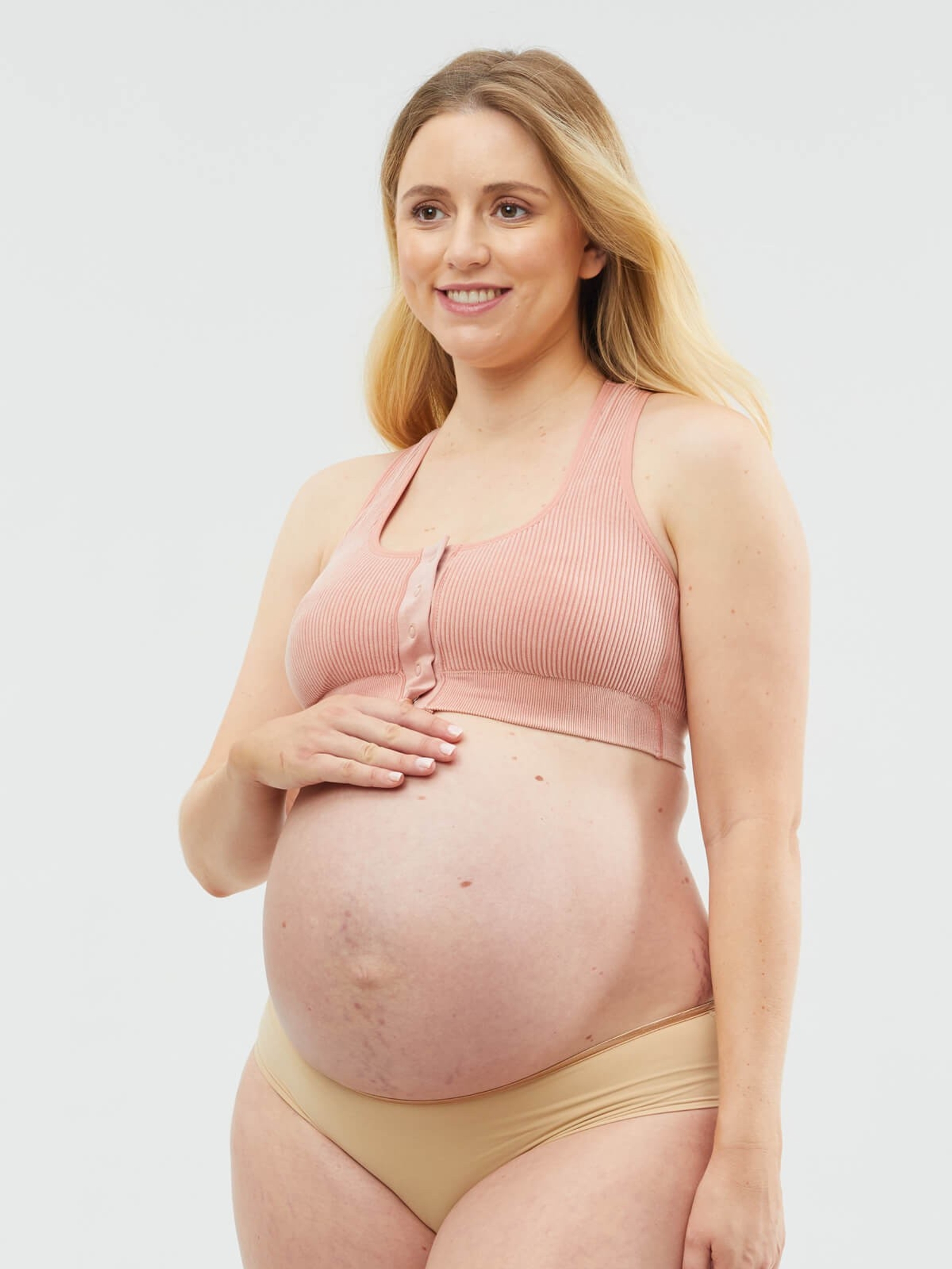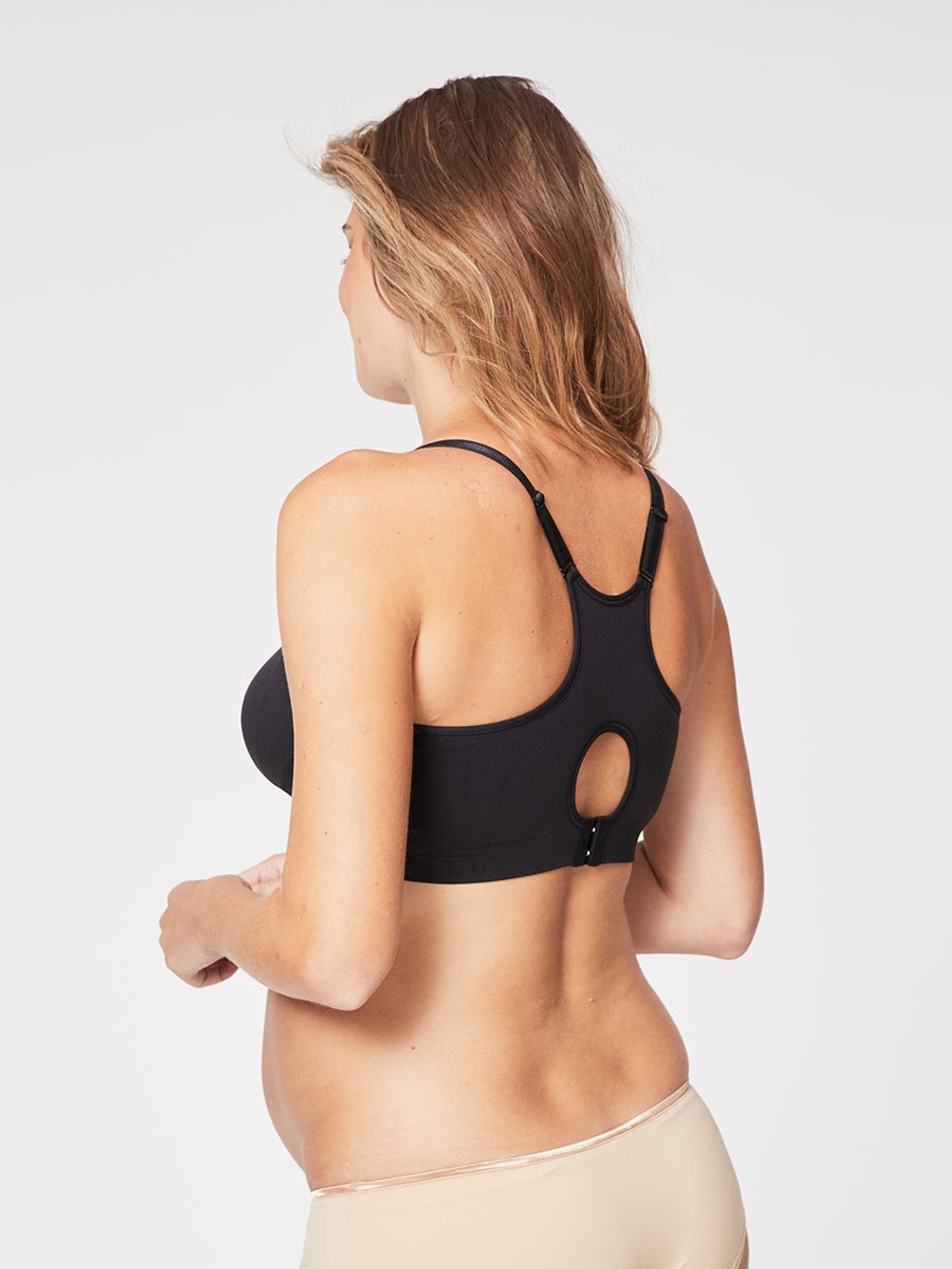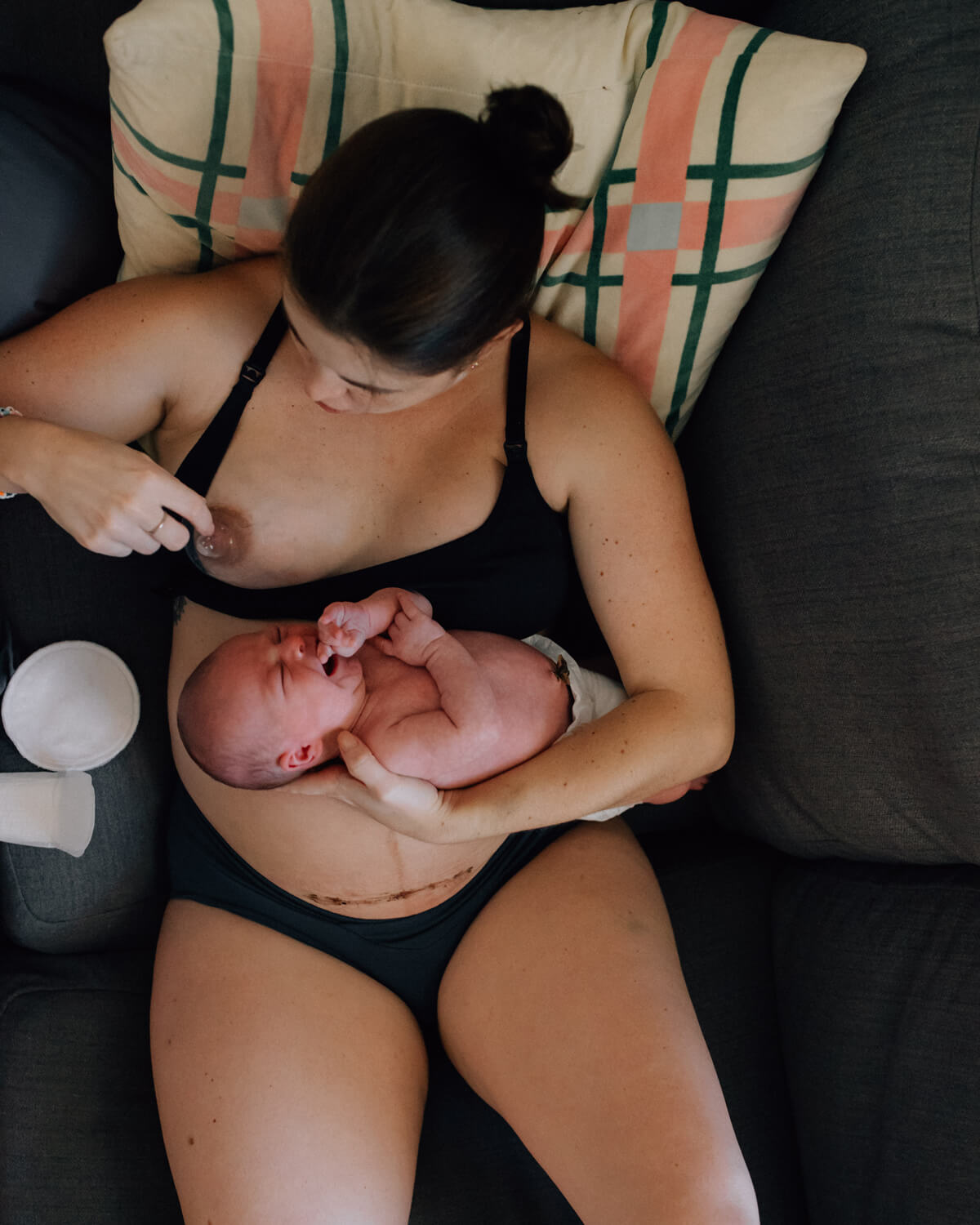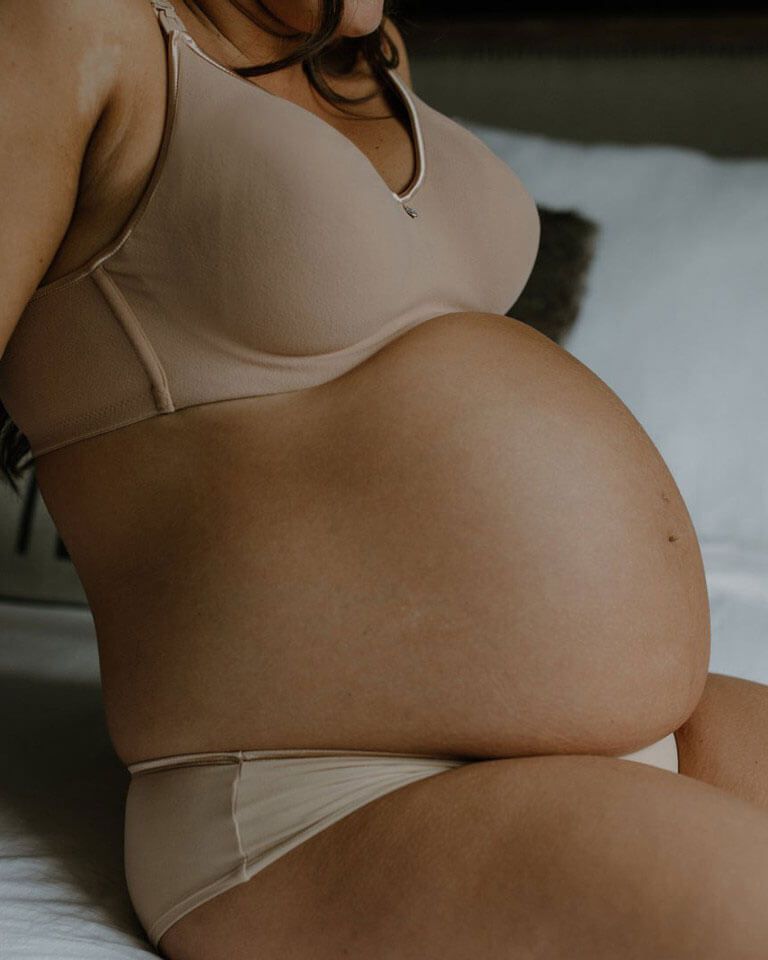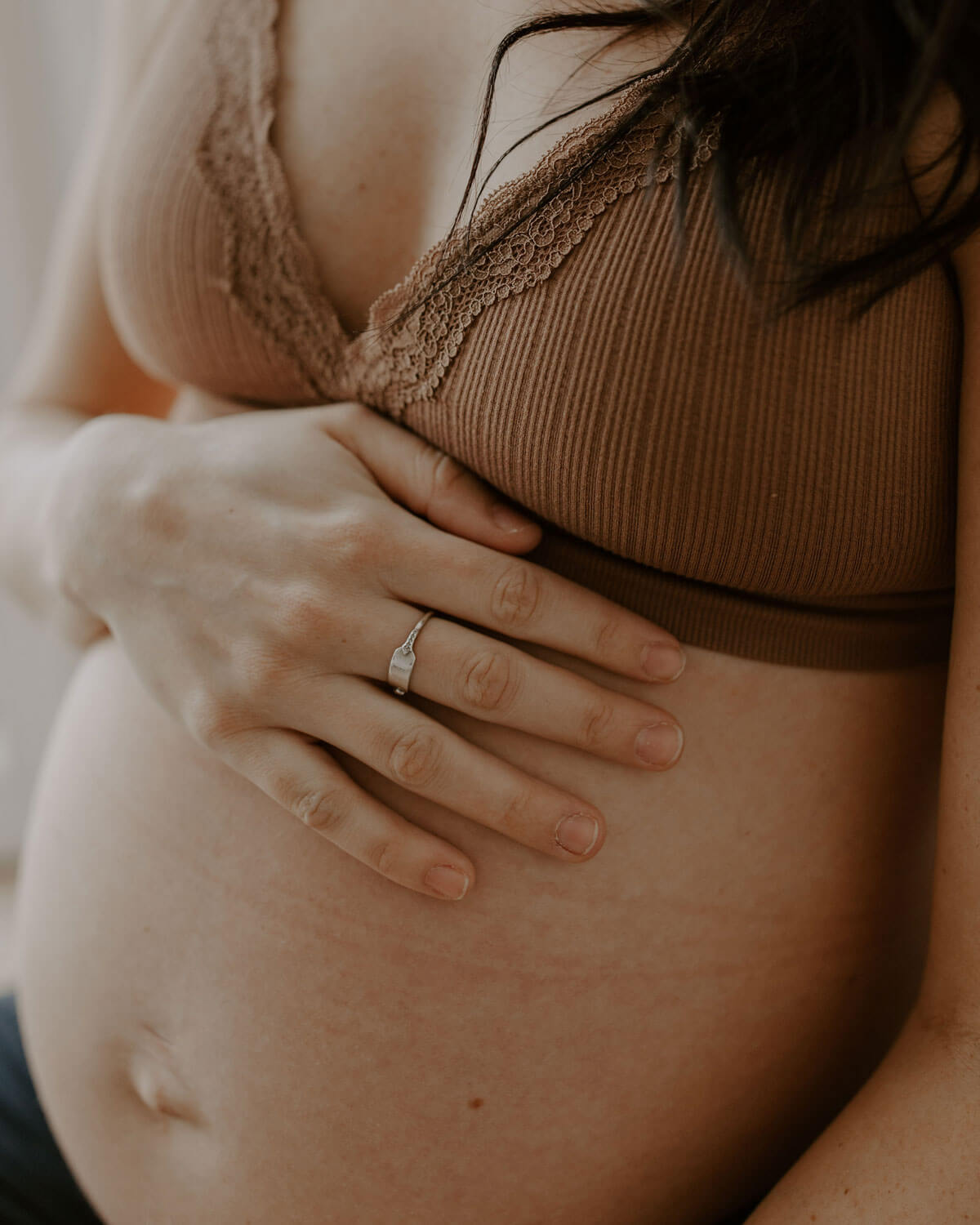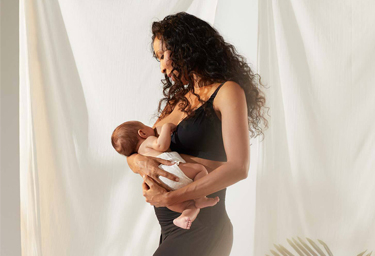When you become pregnant and breastfeed, the weight, size and tenderness of your breasts increases. The difference between wearing a well-structured, comfortable and fitting bra compared to those that are not, could not only mean your all-day comfort but could result in ligament damage and restriction on your milk ducts.
But what do you need to look for in a bra to make sure you’re getting the best for your breasts? Let’s explore the anatomy of a bra, a well-structured bra, and the secrets of how a good maternity and nursing bra works wonders.
Understanding the Lactating Bust
One of the earliest indicators that you’re pregnant is breast changes. They might feel fuller, more sensitive to touch, even a little tender if you bump them. This increased awareness and growth in your first trimester are crucial for developing healthy milk ducts for future breastfeeding.
Pregnancy beautifully transforms your body, and your bra size is no exception! It’s common to experience up to a five-size change. That’s why we designed multi-cup and multi-sized bras to comfortably support your growing and lactating breasts throughout this journey.
Did you know a lactating breast can be roughly 33% heavier compared to a non-lactating breast of the same size? This extra weight emphasizes the importance of a supportive and comfortable bra for optimal breast health during breastfeeding.
Different brands and styles achieve this support in various ways, and we’ll explore their magic to help you find the perfect bra fit.
Normal Bras vs Nursing Bras
The main difference between a normal bra and a nursing bra is the ability to breastfeed while wearing the garment. While a basic nursing bra allows for feeding, a truly great one excels. It adapts to your changing body (thanks to multi-sizing or adjustability) for a comfortable fit throughout pregnancy and breastfeeding.
Great stretch recovery ensures optimal support regardless of fullness, while high-quality materials and construction prioritise comfort for extended wear. This makes a great nursing bra your reliable companion on your breastfeeding journey.
Bras That Grow With You
During pregnancy, your ribcage expands to create space for your growing baby. A good maternity/nursing bra with 6 hook and eye closures allows for this growth while ensuring lasting wear even after childbirth when your ribcage shrinks back down.
Frequent nursing (around 6 times a day) can cause breast size fluctuations of 1-2 cups. A supportive bra becomes essential during this time. By properly supporting your breasts, you prevent ligaments from overworking, a leading cause of sagging.
The ideal bra depends on your desired support level, comfort preference, and bra size. The frame should be supportive with minimal stretch for a secure fit. The lower cup should also be supportive, with the stretch concentrated at the top of the cup to accommodate size changes.
Both straps and back wings should have a touch of stretch for comfort, but not so much that they lose shape. For fuller figures, a double-lined power mesh back wing ensures a secure and lasting fit, wash after wash.
Maternity and Nursing Bra Anatomy
There are bras and then there are well-made bras. Let’s compare what is typically found on an average sized bra compared with those well-made one’s for the pregnant or lactating.
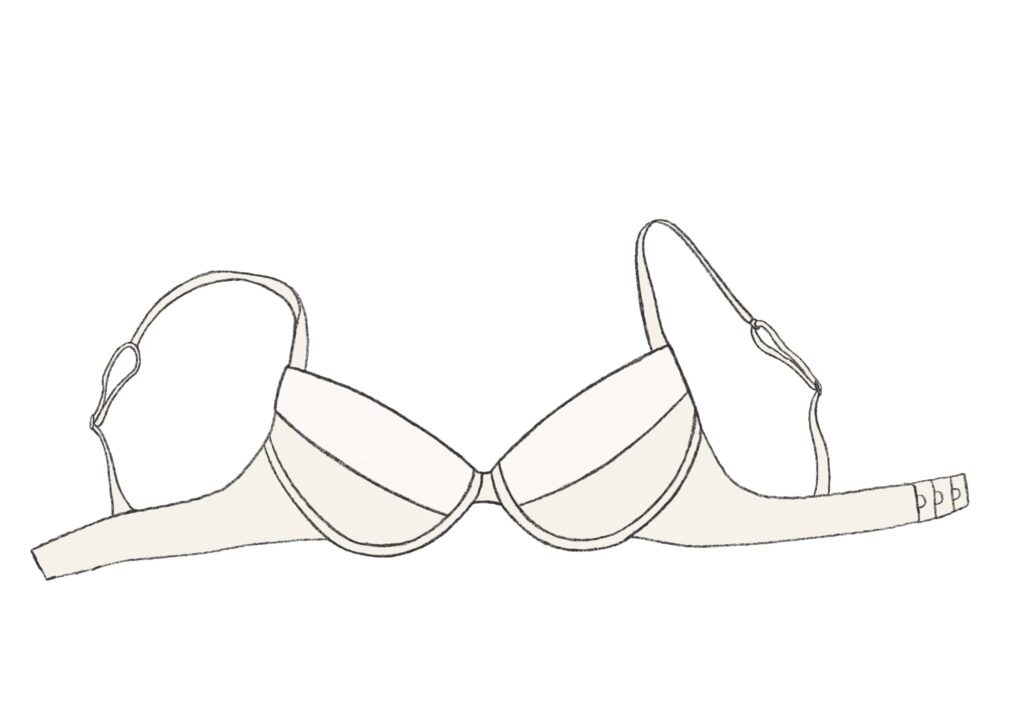
Smaller, non-nursing busts don’t require as much support as their larger counterparts, so bras for up to DD cups are generally not as well made and therefore cheaper.
It’s common for these bras to have thin shoulder straps, limited back adjustments with 1-2 rows of hooks and eyes, and usually one (but occasionally two maximum) piece cup construction.
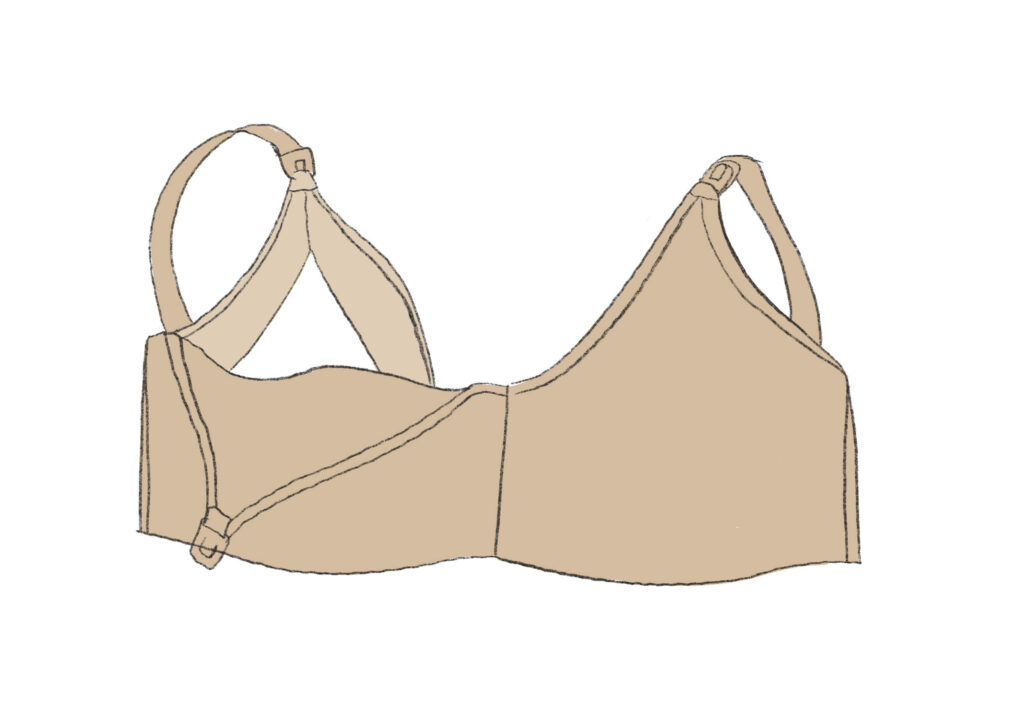
During pregnancy, your body changes not just in size, but also in its need for comfort and support. With frequent wear, sometimes around the clock, a good bra becomes essential. The additional weight of your lactating breasts requires extra support to prevent discomfort and sagging.
The defining feature of a nursing bra is its ability to expose the breast for feeding, achieved through drop-down cups, pull-aside mechanisms, zippers, or other methods, allowing for easy and discreet nursing sessions.
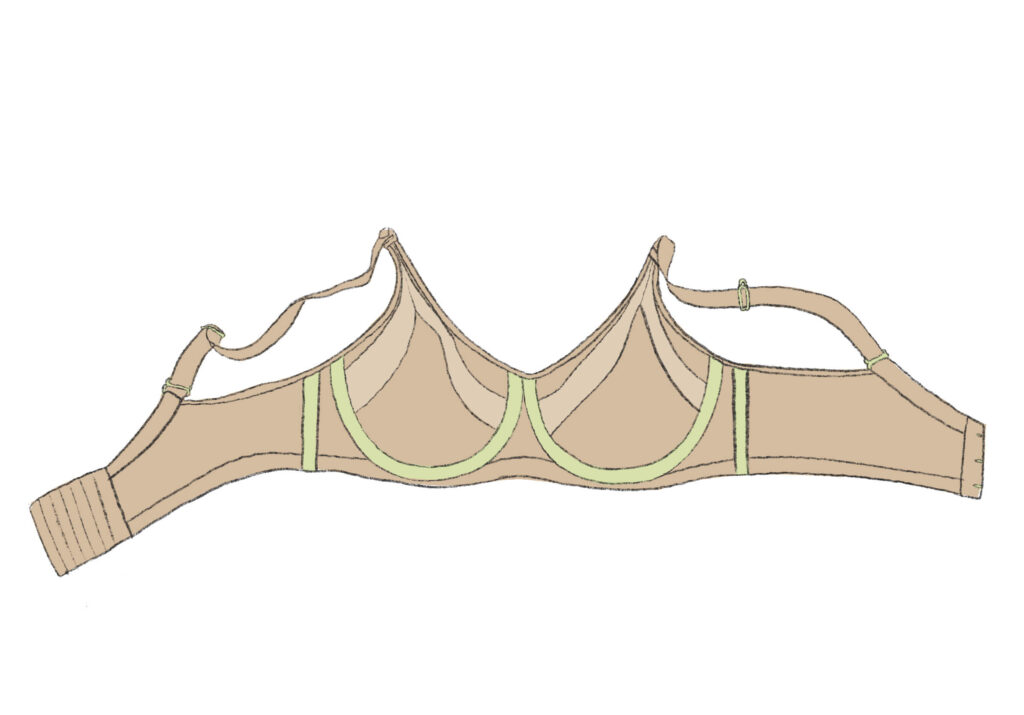
There’s also a range of other features a well-made nursing bra will boast. Let’s explore some of them in more detail.
| Feature: | Reason: |
| Reinforced Lower Cup | The weight of the bust needs a platform to rest on for support, if the lower cup is stretchy, then the bust will droop and sag. |
| Strong Frame | The frame anchors the wires and cups to your diaphragm. If there is no frame, this leaves the back wing and straps to do all the work. |
| Wide Elastic Underband | This helps to anchor the frame. The wider the elastic, the better the quality and ease of anchorage. |
| Double Layered Back Wing | Double the durability, stretch and recovery. |
| Powermesh Lining | Powermesh typically has over 20% elastane and is extremely strong, so it provides the support while the outer material is there to look pretty. |
| Cantilever Back Sweep | This means the shoulder strap is anchored to the hook and eye with a curved back section to the back band. This allows the back band to be wider and sturdier for better anchoring and support. |
| J-Hook | If the straps can be converted to a racer back, this can offer greater support for those that like to wear their straps this way. |
| Wide, Short-Stretch Straps | The sturdier the straps, the less they will dig into your shoulders with the weight of your breasts and the wider the straps, the more dispersed the weight is across your shoulders. |
| 3-4 Piece Cups | The more pieces used to make the cup, the stronger it will be and better shape it will provide to a larger bust. |
| Side Sling | An extra section of reinforcement to help push the breast forward for a better silhouette and more support. It also keeps the straps in place when the cup is dropped down for nursing. |
| Side Boning | Modern bras still possess a little homage to corsetry in the form of side boning. This helps the bra keep its structure and the underwires do their job. |
| Flexible & Strong Wires | The metal used in the wires should be flexible to avoid compression on your milk ducts. A good flexible wire will become stronger, the longer and larger it becomes for each size. |
Cup Construction for Support and Shape
There are many different types of nursing bras out there, and their construction is determined by the designed level of support, comfort and shape. Let’s explore some of the most popular bra styles and how their construction provides support and shape for lactating busts.
Plunge: Plunge bras often require a sturdier underwire to effectively support cleavage in a lower neckline. In contrast, bras with a higher center front achieve support more readily by combining the straps and centre front for a more natural lift.
Cut and Sew Cups: Seams play a crucial role in shaping and supporting the bust. By strategically placing seams and utilising different fabrics, bra construction can offer targeted support.
Stronger fabrics, like those often used in side panels and lower cup pieces, provide a foundation for lift. Stretchier materials, on the other hand, allow for comfortable movement and accommodate variations in breast size.
Seamless or Wire-Free: For a supportive wire-free bra, prioritise features like internal slings for extra lift, wider straps for better weight distribution, and a larger hook-and-eye closure for a secure fit. These elements all contribute to a great quality bra that’s more likely to be comfortable, supportive, and last a long time.
Types of Nursing Access
Not only are there a variety of styles of nursing bras, there’s also various ways they can provide breastfeeding access. Some of the most common include:
- Drop-Down Cup with Folded Edge Sling: Offers both easy access and support. The folded edge sling holds the strap in place while gently supporting your breast for comfortable nursing.
- Drop-Down Cup with A-Frame Sling: Ideal for larger cups, this sling provides extra support and reveals a smaller breast area. Perfect for those who prefer more modesty.
- Pull-Aside Cups: Generally found in less structured bras, these cups offer superior comfort. The entire cup is stretchy for easy access, but some may find holding them in place inconvenient.
- Zipper Closures: Discreet and convenient, zippers (centred or along the over-bust seam) offer a quick way to access your breast. Choose this option for ease of use and a sleek look.
Material Selection and Comfort
During pregnancy and breastfeeding, your body temperature naturally rises. You’ll generally feel warmer and burn more calories from daily activities, including nursing. To combat this, a good maternity and nursing bra should be both breathable and durable.
Look for fabrics high in elastane for their ability to recover quickly after stretching. Breathable and performance fabrics like microfiber, bamboo, cotton, and brushed knits are better at wicking moisture, keeping you cooler throughout the day.
Sizing and Fitting
Throughout pregnancy and breastfeeding, your body changes rapidly, and bra size can fluctuate up to five times! Many brands now offer multi-sized bras that adjust to your changing shape, ensuring a comfortable and supportive fit.
A well-fitting bra is crucial – one that’s too big offers no support, while a too-small bra can cause discomfort, irritation, blocked ducts, and even mastitis.
Caring for Maternity and Nursing Bras
Maternity and nursing bras are your constant companions during pregnancy and breastfeeding. They endure the increased sweat, constant wear, and the inevitable milk leaks that come with feeding your baby. Since breast milk is a protein, proper washing is essential to maintain the bra’s performance and lifespan.
To prevent staining and damage to the fabric, avoid using hot water when washing your bras. Hot water can cook the protein in breast milk, causing it to set and adhere to the fibers. Instead, opt for cool water and a mild detergent.
Ideally, handwashing your bras is the best way to ensure thorough cleaning without damaging the delicate materials. However, for busy moms, a delicates cycle with cool water and a mild detergent in a mesh laundry bag is perfectly acceptable.
Remember, always hang your bras to dry in the shade to keep them looking and performing their best.
A pregnant and breastfeeding mama’s body undergoes the most dramatic changes in her life. For this special journey, a single bra style and size simply won’t do! No matter what style you favored before pregnancy, there’s sure to be a comfortable and functional nursing bra that fits your size, lifestyle, and needs.
With our guide to essential features, you’re now equipped to find the perfect nursing bra for you.
LIKE WHAT YOU READ?
Join CakeMama Club & get 10% OFF your first order!
Plus you’ll get tips + tricks for pregnancy, postpartum & breastfeeding, get member-only offers, earn CakeCoins every time you shop + more. Learn more








